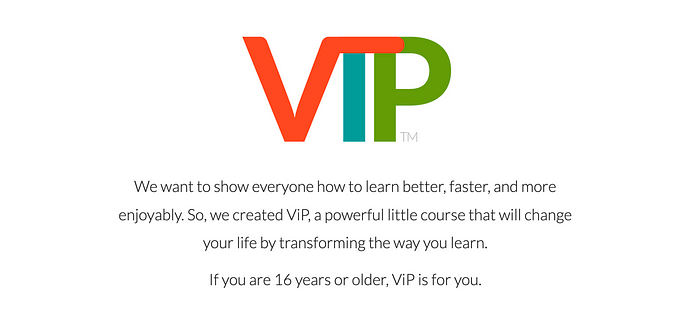
VCoL in action: How to use micro-VCoLs to learn optimally on the fly
Many adults find it difficult to carve out the time for a formal learning experience or private study. When they do, they often feel that the practical benefits are marginal. What’s needed is a way to learn effectively from everyday experience. This is the role of the mighty micro-VCoL.
See our growing collection of free good-in-a-crisis micro-VCoLs at LecticaLive.
Google “habits of highly successful people,” and it’s likely that habitual learning (from experience) will be high on just about every list. In fact, I would argue that many successful people not only learn habitually but also learn like babies and young children, driven by a fearless hunger that looks a lot like addiction. Consciously or unconsciously, they’re learning in a way that taps into the brain’s native motivational system (which just happens to be the same system that’s hijacked by social media, gaming, and addictive substances).

VCoL (the virtuous cycle of learning), is designed to optimize learning while leveraging this motivational system. It’s easiest to tap into this motivational system when VCoLs are small, focused, relevant, and habitual. We call VCoLs with these characteristics micro-VCoLs.
What is a micro-VCoL?
Micro-VCoLs are frequently iterated learning cycles that are embedded in everyday activities. Like any VCoL, they involve setting a learning goal, gathering information, applying information, and reflecting on outcomes (preferably with input from others). But in the case of the micro-VCoL, the focus is on the smaller skills (micro-skills) that make up complex sets of skills.
From macro to micro
Most skills can be broken down into increasingly granular component skills. At the most granular level are micro-skills. These are best learned through micro-VCoLing.

To illustrate, collaborative capacity—one of the VUCA skills targeted in Lectica’s LDMA—is actually a collection of macro-skills, including facilitation. Skills like facilitation are often made up of even more granular skills. For example, facilitation requires effective listening skills (mini-skills), which themselves can be further broken down into micro-skills, including but not limited to:
- identifying opportunities for listening
- giving others the opportunity to speak
- opening yourself to alternate—possibly confronting—perspectives
- truly listening
- feeding back what you hear to get clarification (a.k.a. reflecting)
- asking clarifying questions (a.k.a probing questions).
Micro-VCoLs are built around micro-skills. (I’ve included a couple of examples, below.)
Since this article was written, Lectica has developed little learning tools called Micro-VCoL Makers that allow anyone to learn basic micro-VCoLing skills.
Micro-VCoL varieties
Micro-VCoLs come in different flavors. There are micro-VCoLs that are designed to help people (2) build basic micro-VCoLing skills, (2) practice specific skills, or (3) identify and emulate the skills of others.
Awareness is the most fundamental VCoLing skill. It’s used in every VCoL, and it’s the first skill we teach in our ViP (VCoL in Practice) course.
The Awareness micro-VCoL below was designed to build skills for identifying nonverbal listening signals.
Awareness Micro-VCol example: Effective listening — nonverbal signals
There are a number of ways in which people demonstrate effective listening, including a number of nonverbal signals, such as:
- Facing the speaker,
- Leaning in to the speaker,
- Maintaining an open posture (uncrossed arms),
- Not averting one’s gaze to look at a watch, phone, or other distraction, and
- Nodding, smiling, or showing other appropriate emotional reactions.
In this micro-VCoL, you will sharpen your awareness of these listening cues by observing the behavior of others.
Set: Learn to quickly identify non-verbal signals of effective listening.
Seek: Show the list of nonverbal signals above to a couple of friends or colleages. Ask them if they can think of any other ways that good listeners nonverbally signal that they’re listening. Add any new signals to the list, then print it out so you can carry it around with you for the next few days.
Apply: During the next few days, whenever you observe people conversing, look for evidence of the listening signals on your list. (Try to keep your mind focused on noticing listening signals rather than making judgments about their quality or the people making them.)
Reflect now: Each time you witness one of the signals, immediately put a tally-mark next to it (on your list).
Reflect later: At the end of each day, take a moment to consider your observations to date. Are some signals more common than others? Did you find some signals easier to observe than others?
Reset: Continue practicing this VCoL until you are confident that you are able to quickly identify all of the listening signals in your list. Then, begin practicing the VCoL with one modification. This time, observe your own listening signals.
Practice micro-VCoLs
Another type of micro-VCol is a practice VCoL. Practice VCoLs can be used to build virtuosity in any domain, including (but not limited to) self-awareness and personal growth, interpersonal relations, leadership, STEM, reasoning, athletics, the arts, problem-solving & decision-making, work-related skills, and maker skills. In other words, practice micro-VCoLs can be put to work just about anywhere.
The micro-VCoL described below is designed to build skills for demonstrating understanding.
Practice Micro-VCoL example: Effective listening — demonstrating understanding
One of the best ways to check on your understanding of what someone else is saying is paraphrasing. Paraphrasing involves stating your understanding of another person’s argument or claim. Paraphrasing allows you to:
- demonstrate that you are listening to a speaker and (hopefully) understand what they have said, and
- give the speaker an opportunity to correct any errors in your interpretation.
Examples of paraphrasing statements include:
- I’m not sure I completely understand,but…
- If I’m hearing you correctly…
- It appears that you…
- It seems as if you’re…
- So, the way you see it…
Set: Cultivate the habit of checking on your understanding by paraphrasing what you’ve heard.
Seek: Review the introductory paragraph and listen to the video to ensure that you understand what paraphrasing involves.
Apply: During the next several days, experiment with paraphrasing by following the guidelines above. Each time a subordinate or colleague makes an important point that you’re not entirely sure you understand, try paraphrasing that point to get their feedback on your current understanding.
Reflect now: Immediately reflect very briefly on the success of each of your efforts.
- What worked? What didn’t?
- What do you want to try next?
Reflect later: At the end of each day, consider your observations to date. Ask yourself the following questions:
- Did paraphrasing get easier as the day progressed? In what ways?
- Did paraphrasing improve your understanding of others’ perspectives? How?
- What aspect of paraphrasing would you like to improve upon tomorrow?
Reset: Once you are satisfied with your paraphrasing skills, consider a new micro-VCoL around one of the other listening skills mentioned in the Active Listening article from the University of Adelaide.
Awareness VCoLs often precede practice VCoLs. After all, it’s difficult to practice a skill until we can quickly identify opportunities for using it.
From micro to macro
After we have developed all of the micro-skills that contribute to the mini-skills that contribute to the macro-skill, we can continue polishing all of these skills with continuous habitual micro-VCoLing.

The advantages of micro-VCoLing
See my 2020 artcle, The many benefits of micro-VCoLing for a more up-to-date take on the benefits of Micro-VCoLing.
- Micro-VCoLs are minimally disruptive: They can be seamlessly integrated into everyday activities, often involving only a few minutes of information gathering or reflection each day.
- They simultaneously build knowledge and skill: The second step of VCoL—gathering information—is narrowly focused on the specific information required to build a particular micro-skill. For instance, the information gathering step of a micro-VCoL focused on listening might involve reading a short article by an expert or making a set of personal observations.
- They address the learning needs of the moment: Micro-VCoLs are always relevant because they are designed to build needed skills in context, as the need arises.
- They require action: Like all VCoLs, every micro-VCoL includes a step in which learners apply the skills and knowledge they have accumulated so far. Following each application, they reflect on outcomes, then use their insights to set the next learning goal. Over time, micro-VCoLers develop a bias for reflective action and iteration.
- They reduce learning risks: Micro-VCoLs are initially applied in low-stakes contexts, reducing the impact of mistakes made while building new skills. Once they have been developed to an acceptable level, these skills can be applied in higher risk contexts.
- They quickly become a habit of mind: Unlike the study skills we learned in school, VCoLs are designed to help us learn the way our brains like to learn. And because our brains like them, micro-VCoLs are habit-forming.
- They optimize in-the-moment learning, which not only increases current skill but also provides a solid foundation for future learning and accelerates the learning process.


